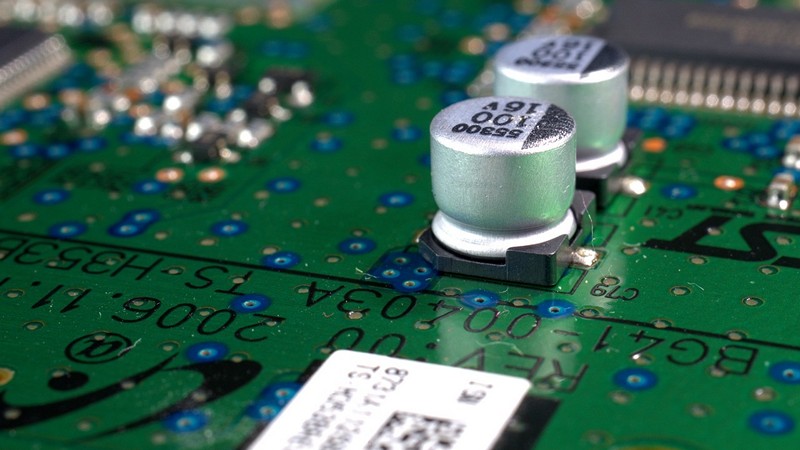
OpenAI’s ChatGPT, the widely used artificial intelligence chatbot, is facing scrutiny from Italy’s data protection regulator, the Garante, over potential violations of the European Union’s General Data Protection Regulation (GDPR). The regulator has issued a “notice of objection,” giving OpenAI 30 days to respond with defense briefs. What specific privacy concerns and potential GDPR violations has the Garante identified in relation to ChatGPT, how does OpenAI plan to defend itself against the allegations, and what steps does it propose to take to address the regulator’s concerns?
Top Stories This Week
- Italy Says ChatGPT Violates Data Protection Rules
- Apple Warns Proposed UK Law Will Affect Software Updates Around The World
- Japan’s NTT And Intel To Build ‘Game Changing’ Optical Chips By 2027
- OpenAI Looking To Establish Global Chip Factories
- Welsh Semiconductor Factory ‘Left In Limbo’ As Westminster Fails To Approve US Takeover
- Chinese Hackers Infiltrated Home Wi-Fi Routers To Attack Infrastructure, FBI Warns
- Can A Mouse Become A Webcam? This Clever Mod Shows What Can Be Done With An Optical Sensor
- Things Are Going To Get Weird As The Nanometer Era Draws To A Close
- The Company Is Exploring The Use Of Lithium-Ion Capacitors For Hybrid Storage
- Smart Hat Senses When Traffic Lights Change And Tells You Via An App
- Functional 16-Bit CPU Built And Runs In Excel
Hardware Business News
Apple Warns Proposed UK Law Will Affect Software Updates Around The World

Apple has expressed deep concerns over proposed amendments to the United Kingdom’s Investigatory Powers Act (IPA), stating that the changes could grant the UK government unprecedented power to veto privacy and security updates secretly. The tech giant warned that if passed, the amendments could not only affect UK users but potentially impact users globally, depriving them of crucial new privacy and security features. The IPA, originally enacted in 2016, is undergoing amendments to address technological changes and their impact on law enforcement capabilities. What specific provisions in the proposed amendments raise concerns for Apple regarding the potential impact on user privacy and security features, how does Apple argue that the amendments could conflict with EU and US laws, including the General Data Protection Regulation, and what implications might this have on the global tech industry?
Japan’s NTT And Intel To Build ‘Game Changing’ Optical Chips By 2027

Japan’s Ministry of Economy, Trade, and Industry has unveiled a significant initiative, offering $307 million in subsidies to advance the development of optical technology for semiconductors. Teaming up with telecom giant NTT and collaborating with industry players, including Intel, the aim is to establish production technology for optical technology semiconductors by 2027. This move is part of Japan’s broader strategy to strengthen its semiconductor industry, with the government hoping to position the country as a global leader in the field. How does the collaboration between Japan-based NTT and US chip maker Intel signify a global effort in advancing optical technology for semiconductors, in what ways does the Japanese government’s subsidy program aim to attract semiconductor companies, and how is it contributing to the country’s goal of becoming a world leader in semiconductor technology?
OpenAI Looking To Establish Global Chip Factories

OpenAI’s CEO, Sam Altman, is reportedly in talks with major investors to secure funding for the establishment of a global network of semiconductor manufacturing factories. Although details remain scarce, potential investors may include industry giants like Intel, TSMC, and Samsung Electronics. The initiative arises from concerns that the rising ubiquity of AI could outstrip the supply of chips needed for widespread deployment, with projections indicating a potential shortfall in the production of AI-related chips. How does Sam Altman’s initiative to establish a global network of semiconductor manufacturing factories align with the growing demand for AI applications, what strategic partnerships could enhance the success of this ambitious project, and how might Altman’s proactive approach to addressing potential chip shortages near the end of the decade influence the trajectory of the semiconductor industry?
Welsh Semiconductor Factory ‘Left In Limbo’ As Westminster Fails To Approve US Takeover

Recently, the UK Labour party has raised concerns over what it deems as government “dither and delay” in reaching a decision regarding the proposed takeover of Newport Wafer Fab, the UK’s largest semiconductor facility, by US company Vishay Intertechnology. The fate of the Welsh factory has been uncertain for nearly two years, originating from national security concerns related to a 2021 takeover bid by Chinese-owned Nexperia, with the delay already having resulted in job cuts, and the potential for further redundancies. How does the prolonged delay in the UK government’s decision regarding the Vishay Intertechnology takeover impact the semiconductor industry and the workers at Newport Wafer Fab, what are the potential consequences for investments and jobs, and in what ways does the proposed takeover by Vishay Intertechnology align with or alleviate national security concerns compared to the previous bid by Nexperia?
Hardware Engineering News
Chinese Hackers Infiltrated Home Wi-Fi Routers To Attack Infrastructure, FBI Warns

The Federal Bureau of Investigation has disclosed the disruption of a state-backed Chinese effort, known as Volt Typhoon, aimed at planting malware that could compromise critical civilian infrastructure in the United States. FBI Director Chris Wray emphasized the potential threat posed by China, suggesting that Beijing is positioning itself to disrupt daily life in the U.S. should conflict arise between the two nations. In the wake of the disrupted Volt Typhoon operation, how might the US government and cybersecurity agencies collaborate to strengthen defenses against state-backed cyber threats targeting critical infrastructure, what role does outdated technology, such as the exploited Cisco and NetGear routers, play in providing vulnerabilities for state-backed hackers, and what steps can be taken to address these weaknesses in the nation’s cybersecurity infrastructure?
Can A Mouse Become A Webcam? This Clever Mod Shows What Can Be Done With An Optical Sensor

In a quirky and unconventional tech experiment, a user known as Doctor Volt has successfully transformed an ordinary optical mouse into a functional webcam. The project, showcased on YouTube, involves intricate high-tech modifications, including the integration of a wide-angle lens typically used for Raspberry Pi cameras and the use of a third-party microcontroller (ESP32-S3 chip). With additional 3D printing to craft components for lens placement, coupled with software adjustments, Doctor Volt managed to capture recognizable, albeit low-resolution and hazy, footage using the modified mouse-turned-camera. What inspired Doctor Volt to undertake the project of converting an optical mouse into a webcam, how might such creative and unconventional DIY projects contribute to the broader tech enthusiast community, and does such a modification present a concern for privacy?
Things Are Going To Get Weird As The Nanometer Era Draws To A Close

Taiwan Semiconductor Manufacturing Company is reportedly planning to establish a 1nm chip fabrication facility in Chiayi Science Park, signalling a shift towards even more advanced semiconductor technology. As the era of nanometer-based semiconductor manufacturing reaches maturity with 3nm production, the focus is turning to the next steps, with Samsung ramping up 3nm production and Intel set to debut its 20A process later this year. With TSMC’s plans for a 1nm fab, what potential advancements in chip technology and performance can be expected, how does this move position TSMC in the global semiconductor landscape, and beyond advancements in process technology, how are innovations in chip packaging, power delivery, and signalling becoming increasingly critical in overcoming challenges and driving further improvements in semiconductor manufacturing?
Hardware R&D News
The Company Is Exploring The Use Of Lithium-Ion Capacitors For Hybrid Storage

The energy storage landscape is undergoing a transformative shift, fuelled by innovations in lithium-ion capacitors (LiC) and battery supercapacitor hybrid (BSH) systems. A recent report by Zhar Research forecasts this sector to burgeon into a $10 billion industry by 2024, with the CEO of Zhar Research, Dr. Peter Harrop, highlighting the pivotal role of larger lithium-ion capacitors in diverse applications, ranging from fusion power stations to electric trains and unmanned mining vehicles. How have lithium-ion capacitors evolved to address challenges in energy storage, what key applications are driving their adoption, and how is the industry positioning itself to meet the diverse demands of emerging markets, including energy, vehicles, aerospace, military, and electronics?
Smart Hat Senses When Traffic Lights Change And Tells You Via An App

In a significant leap forward for wearable technology, researchers at Nanyang Technological University, Singapore, have developed flexible and wear-resistant conductive fibers capable of creating smart clothes with embedded computers and sensors. Unlike previous attempts that faced challenges such as stress cracks hindering device functionality, the new material, inspired by the properties of aluminosilicate glass used in smartphone screens, promises durability and flexibility. How does the novel technique developed by Nanyang Technological University address the challenges faced by previous attempts in creating conductive fibers for smart clothes, what are the potential applications of these conductive fibers in the realm of wearable technology, as demonstrated by the prototype items, including the traffic-sensing hat and image-decoding jumper, and what solutions could be explored to address this weakness and ensure the longevity of smart features in these garments?
Open-Source Hardware News
Functional 16-Bit CPU Built And Runs In Excel

In a remarkable display of creativity and technical prowess, a YouTuber known as Inkbox has accomplished the seemingly unthinkable—constructing a fully functioning 16-bit CPU within Microsoft Excel. Running at a clock rate of no more than 3Hz, the Excel-based CPU boasts 128KB of RAM, a 16-color 128×128 pixel display, and a custom assembly language named Excel-ASM16. This achievement, achieved without Visual Basic scripts or plugins, showcases the versatility of Excel beyond its conventional spreadsheet applications. How did Inkbox manage to build a 16-bit CPU within Microsoft Excel without resorting to Visual Basic scripts or plugins, what are the key features of this Excel-based CPU, and how does it contribute to showcasing the untapped potential of spreadsheet applications like Excel?


